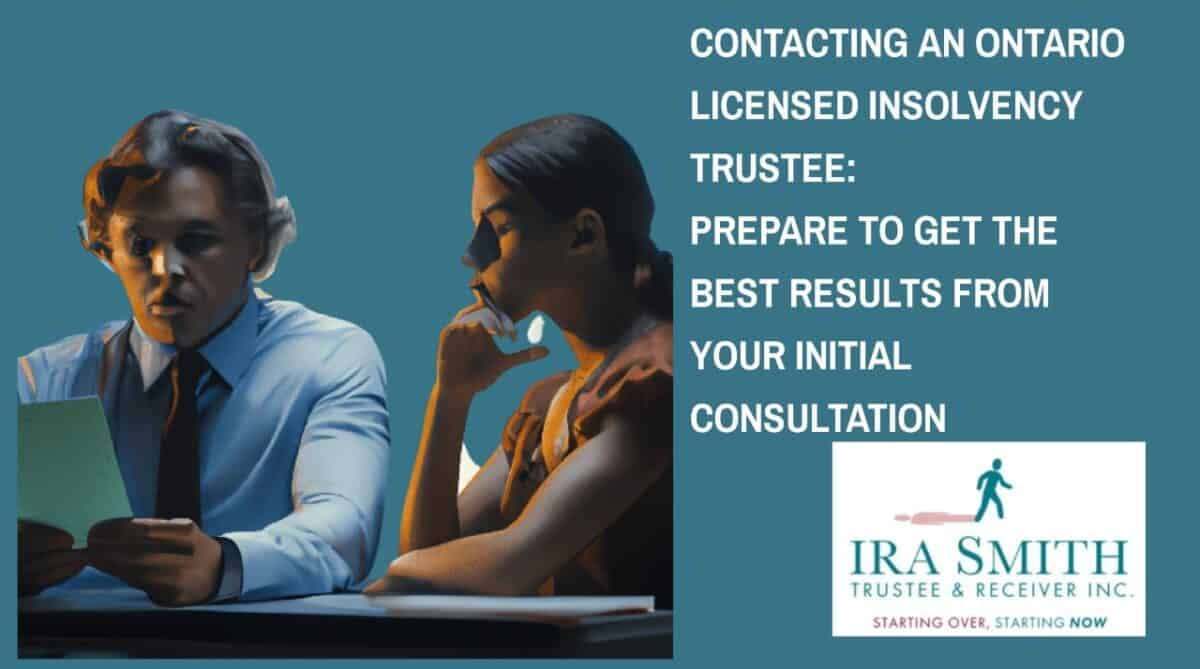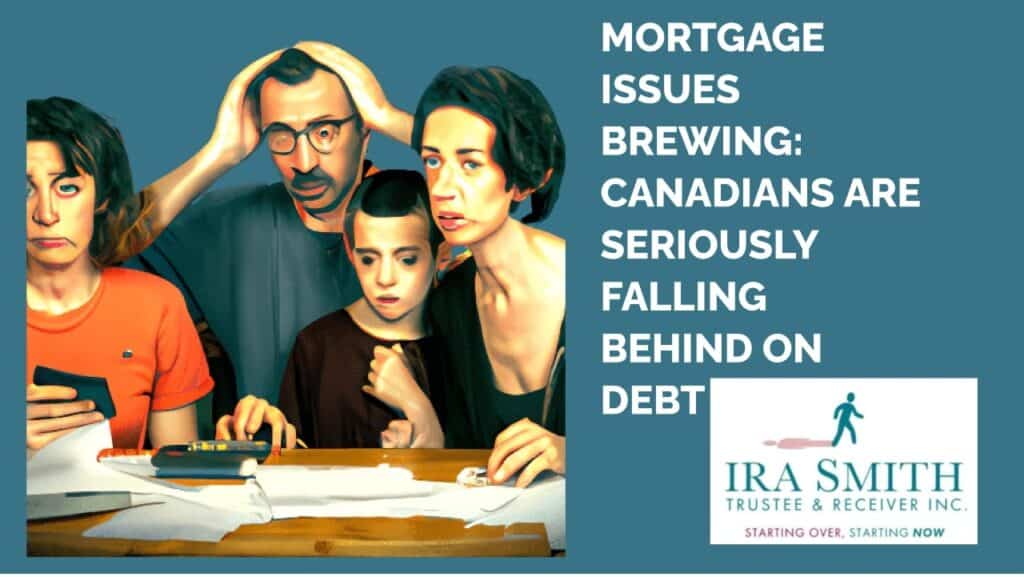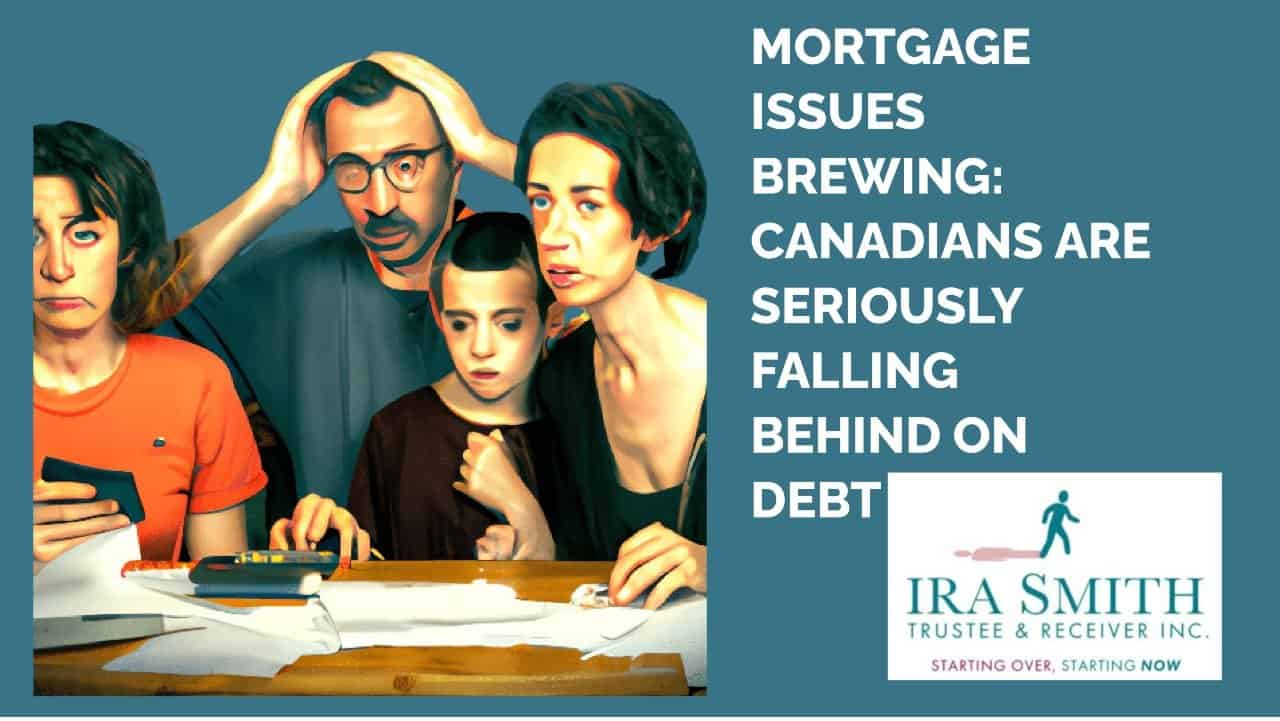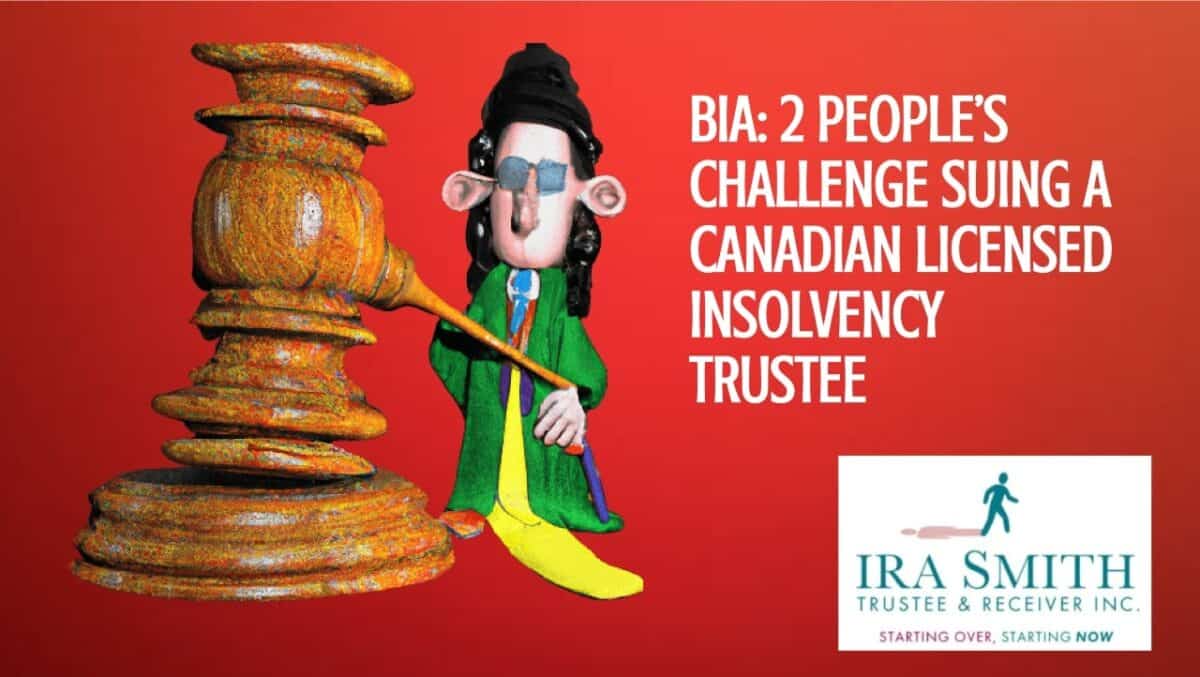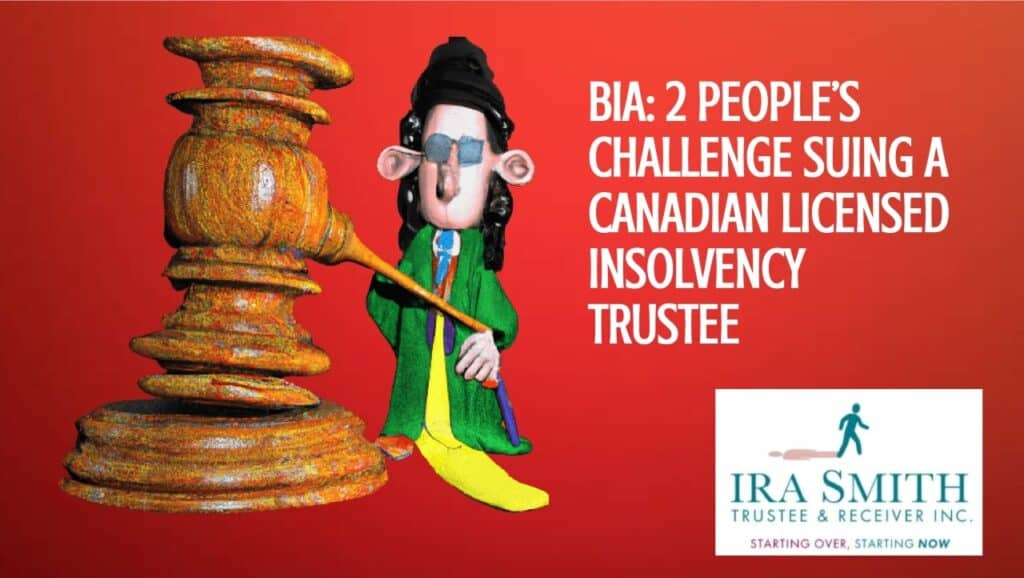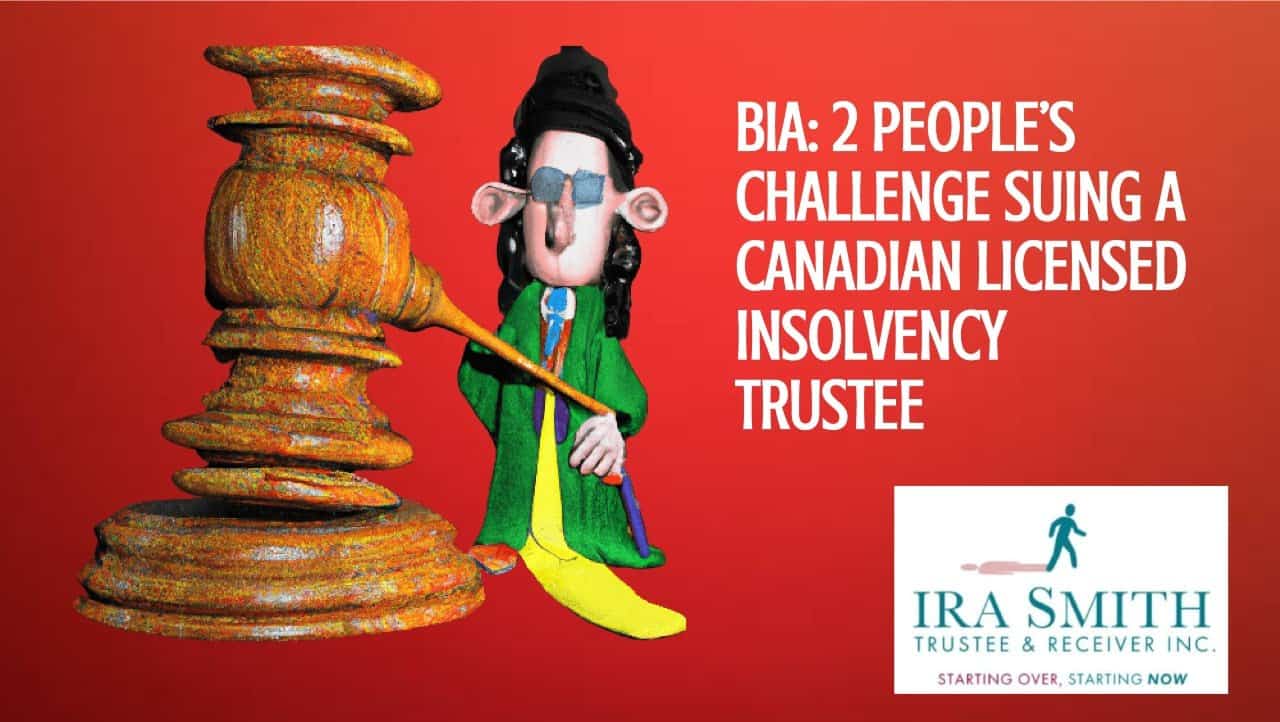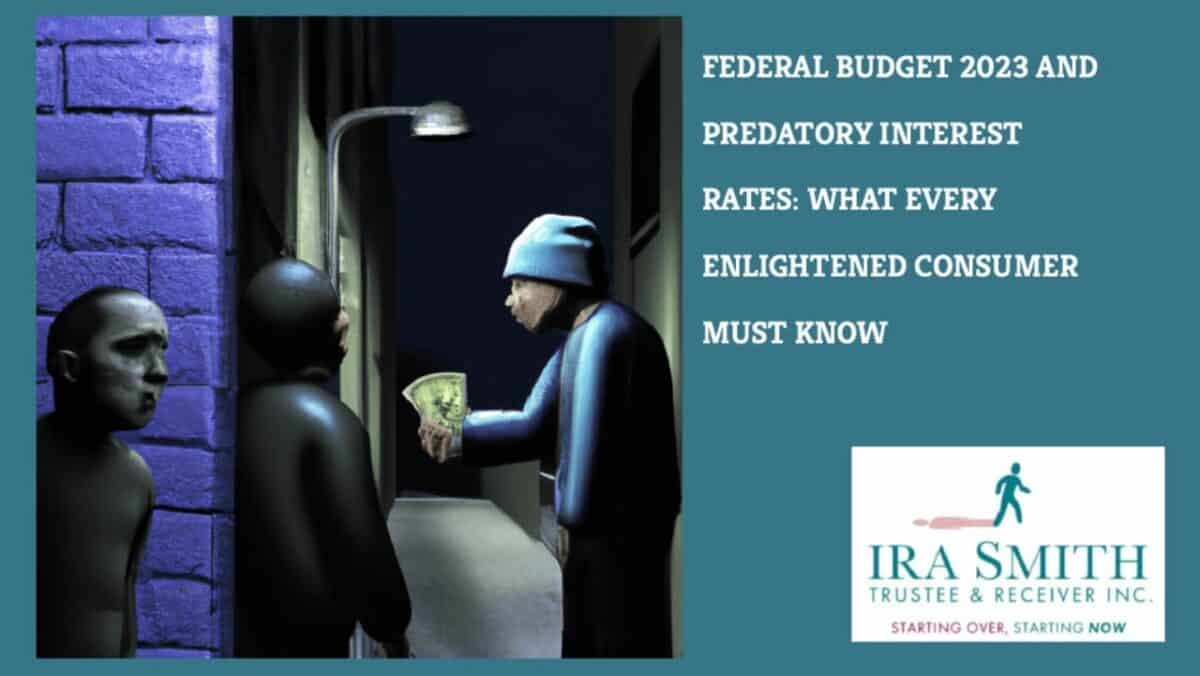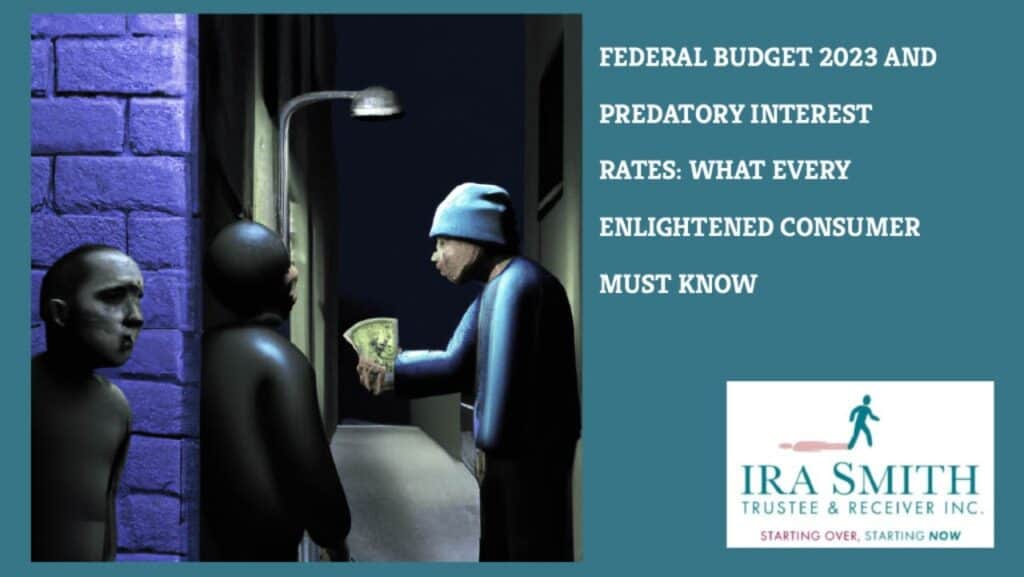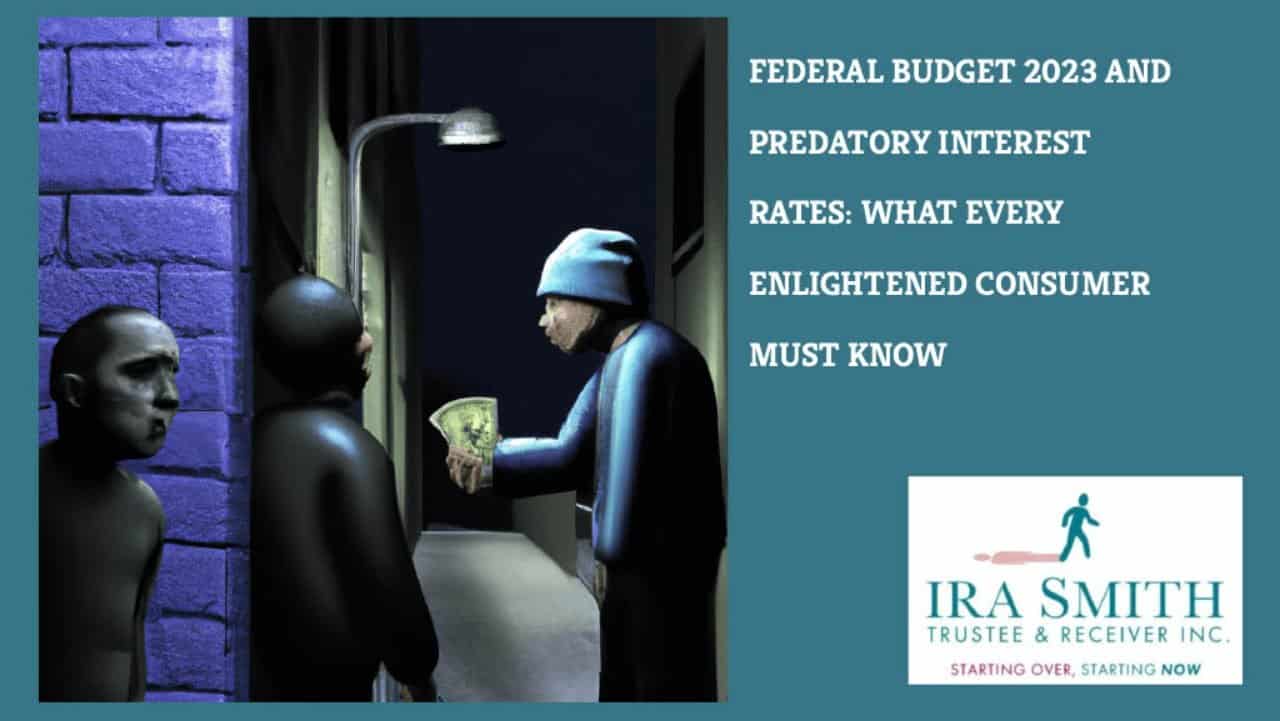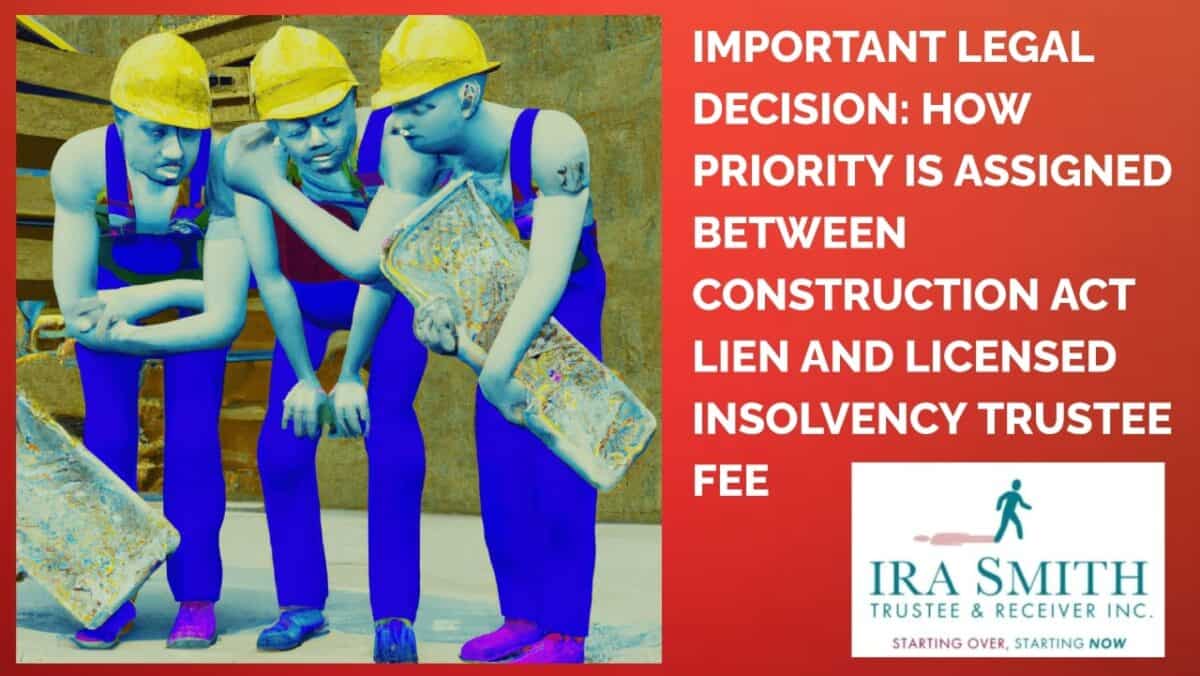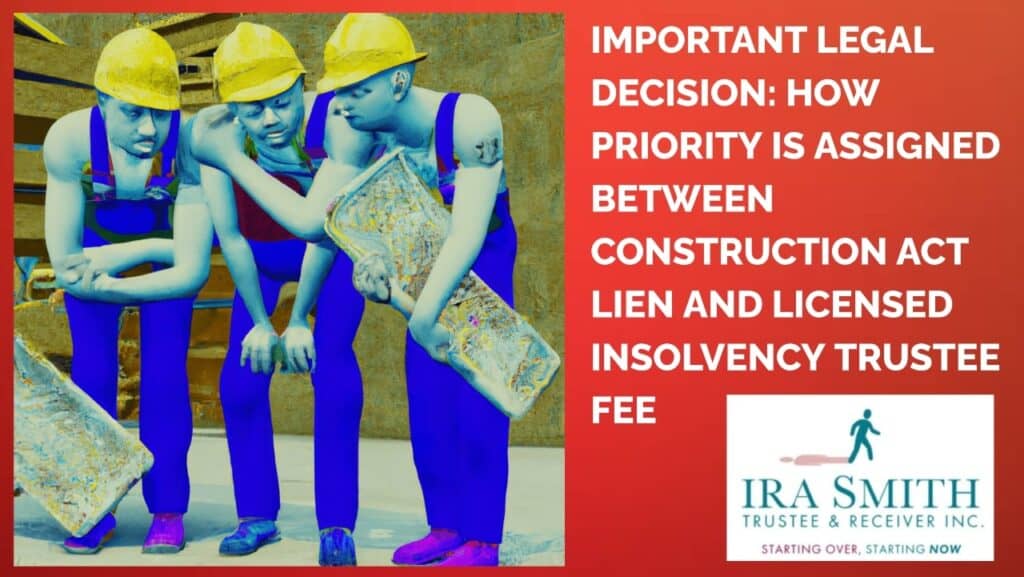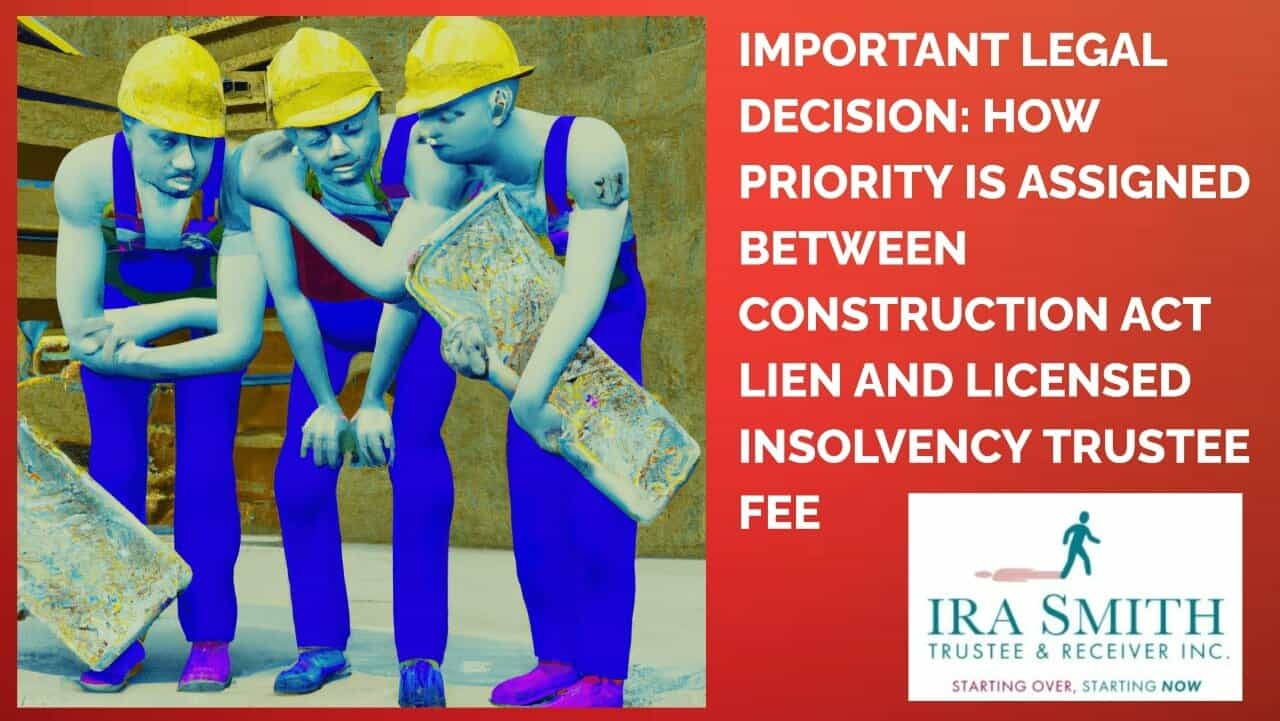<h2>
Licensed insolvency trustee
If you’ve found yourself grappling with personal debt, or your company is in a tight spot because of corporate debt, seeking the guidance of a licensed insolvency trustee is a smart choice. Trustees possess the expertise and resources to assist you in navigating your financial predicament and getting back on the right course.
Before engaging in a conversation with a licensed insolvency trustee, it’s crucial to adequately prepare yourself to make the most of your preliminary consultation. This Brandon’s Blog outlines the essential steps that need to be taken to ensure a fruitful discussion. By adhering to these recommendations, you can be confident that you will derive maximum benefit from your complimentary consultation and obtain the necessary advice to chart your path toward resolving your financial challenges.
Without any further delay, let’s explore the preparations required for your initial consultation with an Ontario Trustee.
Understanding the role of an Ontario licensed insolvency trustee
An Ontario licensed insolvency trustee is a crucial player when it comes to handling financial troubles. Their key function is to help individuals and businesses in navigating the insolvency landscape and find the most effective and feasible options. Trustees are highly educated and licensed specialists who have a deep understanding of the federal government’s Canadian bankruptcy and insolvency legislation and how to apply it in every situation.
When you are drowning in personal or business debt, a Trustee can be your guiding light. They will assess your financial scenario, assist you to recognize your rights and realistic options, and offer experienced advice tailored to your personal story. Whether it’s recommending a debt consolidation loan, outlining the consumer proposal process, strategizing on the financial restructuring of businesses with debt problems or assisting in a personal bankruptcy filing, Trustees can help you get through the one that is best for you, making certain that you make educated choices each step of the way.
It is very important to note that Trustees are objective debt professionals. They aim to discover a reasonable and fair resolution that takes into consideration both your needs and the legal realities that your creditors face. So, if you’re facing economic obstacles and require someone with competence to guide you through the maze, a Trustee is definitely the individual to rely on.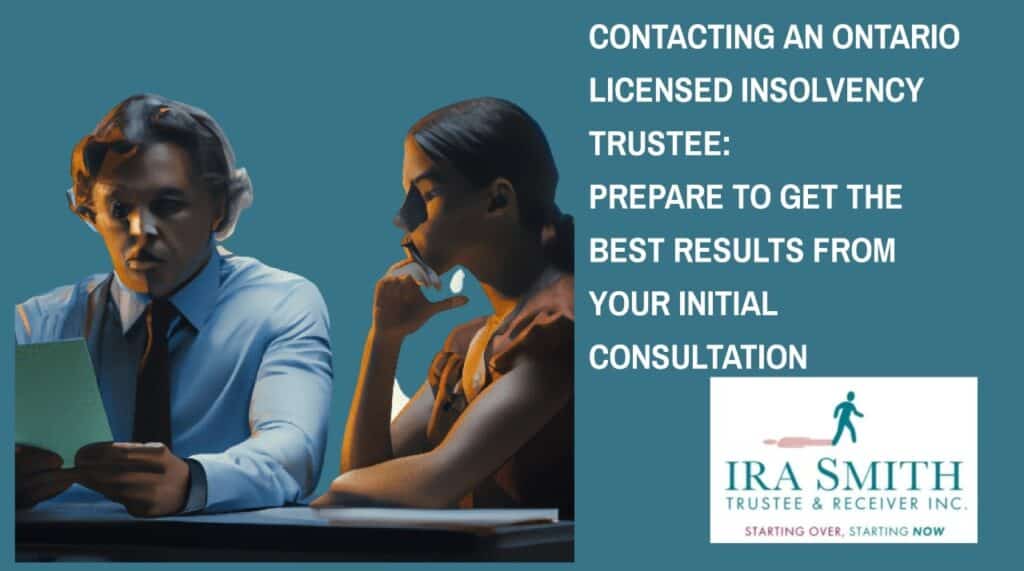
When should you consult a Trustee?
Navigating financial difficulties can be a challenging and overwhelming experience. If you find yourself struggling with mounting debts and unsure about the best way forward, it may be time to consult a licensed insolvency trustee. We specialize in helping individuals and businesses regain control of their financial situations. But when exactly should you seek our expertise? Here are some key scenarios where consulting a Trustee can be beneficial:
- Increasing debt burden: If your debts are continuously piling up, and you find it difficult to make timely payments, it’s a red flag that you should consult a licensed insolvency trustee. They can assess your financial situation, evaluate your debts, and provide guidance on the available options to alleviate your debt burden.
- The threat of legal action: When creditors are making their collection calls and are threatening legal action or have already initiated collection action, it’s crucial to seek professional assistance. A licensed insolvency trustee can help you understand your rights, explore potential solutions, and negotiate with creditors on your behalf.
- Loss of income or job: Sudden job loss or a significant reduction in income can have a severe impact on your financial stability. If you’re facing difficulties meeting your financial obligations due to these circumstances, consulting a licensed insolvency trustee can help you navigate through the challenges and explore strategies for recovery.
- Inability to repay debts: In the event that you have arrived at the point where the repayment of debts is no longer feasible, despite having explored alternative methods such as debt consolidation or negotiation, it is time to enlist the services of a Trustee who will offer guidance in navigating the insolvency process.
- Mounting stress and anxiety: The mounting stress and anxiety that often accompanies financial difficulties can have a debilitating impact on one’s mental and emotional well-being. Should you find yourself feeling overwhelmed, consistently stressed, or experiencing anxiety as a result of your financial situation, don’t hesitate to seek the guidance of a licensed insolvency trustee.
Remember, consulting a licensed insolvency trustee is not limited to these scenarios alone. If you have any concerns about your financial situation or feel uncertain about the best course of action, it’s always wise to seek professional advice. These experts can evaluate your unique circumstances and provide tailored solutions to help you regain control of your finances and pave the way toward a brighter financial future.
Importance of preparation for an initial consultation with the Trustee
Preparation is key when it comes to your initial consultation with an Ontario-licensed insolvency trustee. This is the moment where you get to meet and chat about your financial situation, explore possible solutions, and set yourself on the path to financial recovery. So, why is preparation so important? Well, here’s why:
First off, being prepared helps you make the most of your time with the Trustee. This consultation is a limited window, no longer than 1 hour, so having your ducks in a row and providing accurate information upfront allows the Trustee to understand your situation quickly and give you tailored advice. Time is precious and there is none to waste!
In order to optimize the benefits of your consultation with a Trustee, it is crucial to first correctly prepare for it. By devoting some time to think about how you got to your current financially challenged state, to consider your financial goals and concerns, you can establish a definitive plan of action. This will facilitate a focused and productive dialogue during the consultation, ensuring that the Trustee can address your unique needs with precision and efficiency.
It behooves you to also undertake thorough data collection and organization. This entails meticulously gathering and cataloging all pertinent information related to your financial history, liabilities, assets, income, and expenditures. By undertaking this preparatory work, you will be equipped with a comprehensive and precise understanding of your financial landscape. This will enable the Trustee to offer optimal guidance and recommendations that are tailored to your specific financial needs.
It is crucial to have a comprehensive understanding of the available debt relief options in Canada. Conducting thorough research beforehand allows you to enter the consultation with a well-informed perspective, equipped to ask pertinent questions, evaluate potential risks and benefits, and make prudent decisions regarding your financial future. This sense of empowerment is invaluable.
It is equally essential to consider the Trustee’s credentials and suitability. As a discerning individual, you must assess the Trustee’s expertise, approach, and values to ensure a fruitful partnership. Investing time and effort to gather recommendations, read reviews, and gauge compatibility will guarantee that you have selected a competent professional with whom you can establish an excellent working rapport.
Last but not least, when you come prepared, you exude confidence and engagement. Your thorough preparation gives you a boost of self-assurance, knowing that you’ve done your homework. This means you can actively participate in the consultation, ask relevant questions, and make the most of the Trustee’s guidance. It’s the difference between being in the financial game or being mired and lost!
To sum it all up, preparation is the secret sauce for a successful initial consultation with an Ontario licensed insolvency trustee. It helps you make the most of your time, gain clarity, gather necessary info, understand your options, evaluate the Trustee, and approach the discussion with confidence and engagement. So, put in the effort, get prepared, and get ready to pave your way to financial recovery and stability.
The benefits of speaking with an Ontario Licensed Insolvency Trustee before you make any financial decisions
The benefits of speaking with an Ontario licensed insolvency trustee before you make any financial decisions.
Engaging in dialogue with an Ontario Trustee prior to making any financial determinations can yield considerable advantages. An Insolvency Trustee holds the expertise to both understand and dissect your financial problems and circumstances and acquaint you with the array of choices at your disposal. Trustees possess the proficiency to appraise your financial state and counsel you on the optimal resolution for your particular predicament. The Trustee, like me, may also hold the designation of Chartered Insolvency and Restructuring Professional.
If you find yourself facing economic challenges, it could be a good idea to get in touch with an Ontario Trustee. These professionals are skilled in offering counsel and guidance to individuals and companies grappling with monetary issues. They hold a license and are regulated by the Office of the Superintendent of Bankruptcy Canada. By seeking assistance from a Trustee, you can obtain the support necessary to navigate the intricacies of financial predicaments. Through their aid, you will acquire valuable insights that can influence your decision-making and guide you toward a more prosperous financial future.
Financial assessment
One of the primary benefits of consulting with an Ontario Trustee is receiving a comprehensive financial assessment. LITs possess the expertise to review your financial situation objectively, taking into account your assets, debts, income, and expenses. This assessment allows them to gain a holistic understanding of your financial standing and identify potential solutions tailored to your specific needs.
Debt relief options explained
In times of financial adversity, it is imperative to have an in-depth understanding of the various debt relief options at your disposal. By consulting with a qualified Ontario Trustee, you can gain comprehensive insights into potential solutions, including debt consolidation, consumer proposals, and bankruptcy.
Trustees will inform you of the benefits and drawbacks of each alternative, offering a complete assessment of the potential outcomes and consequences associated with any given choice. Rest assured that with their guidance, you can make an informed decision that will alleviate your financial distress and pave the way toward a brighter fiscal future.
Tailored solutions for your unique situation
Every individual’s financial situation is unique, and what works for one person may not work for another. By consulting with a Trustee, you gain access to personalized solutions that address your specific circumstances. LITs take the time to understand your financial goals, evaluate your resources, and design a strategy that maximizes your chances of achieving a stable financial future.
Protection from creditors and legal actions
When you find yourself struggling with overwhelming debt, it’s common for creditors to take legal action against you. Seeking assistance from a Trustee can help you navigate these legal challenges. LITs can provide protection from creditors who have started legal proceedings. An insolvency process will invoke a stay of proceedings, that puts a temporary halt on creditor actions, giving you breathing room to implement one of your potential debt relief solutions.
Expert negotiations with creditors
Engaging with creditors and negotiating debt repayment terms can be a daunting and stressful process. However, an Ontario Licensed Insolvency Trustee takes that job and all the stress that comes with it off your shoulders, by being the one negotiating with your creditors. Their expertise and knowledge of the legal and financial framework ensure that you receive fair treatment and that your rights are protected throughout the process.
Financial education and future planning
Speaking with an Ontario Trustee offers more than just immediate debt relief. LITs can provide financial education and guidance to help you develop healthy financial habits and plan for a more secure future. They can offer advice on budgeting, saving, and rebuilding credit, equipping you with the necessary tools to achieve long-term financial stability. Two mandatory financial counselling sessions are part of the services to individuals included automatically in any consumer insolvency process.
The key questions to ask to gain a better understanding of the process and your options
In order to optimize the outcome of a discussion with a Trustee regarding your financial situation, it is imperative to approach the exchange with a clear and organized mindset. Engaging in dialogue with a trustee can furnish indispensable observations and aid in discerning informed resolutions for your fiscal outlook. The following segment offers advantageous suggestions to anticipate the tenor of the conversation and how best to equip yourself for it, guaranteeing that you derive the utmost advantage from your interaction with the trustee.
1. Gather Relevant Financial Documents
It is crucial to gather all pertinent financial documents ahead of time. This includes bank statements, tax returns, credit card statements, loan agreements, and any other records that pertain to your financial situation. By providing the Trustee with a full picture of your financial standing, they can deliver practical advice and personalized solutions that are tailored to your unique circumstances. Don’t leave anything behind – come prepared with all the necessary information.
Before meeting with a Trustee, gather all relevant financial documents, such as bank statements, tax returns, credit card statements, loan agreements, and any other records pertaining to your financial situation. These documents will provide the Trustee with a comprehensive understanding of your financial standing, enabling them to offer accurate advice and tailored solutions.
2. Be Transparent and Honest
It’s crucial to be open, transparent, and honest about your financial circumstances during the conversation with the Trustee. A professional code of ethics and confidentiality binds them, so you can feel confident in sharing sensitive information. Providing a complete and accurate picture of your financial situation will enable them to offer the best possible guidance and solutions.
3. Prepare a List of Questions and Concerns
To make the most of your conversation with the Trustee, prepare a list of questions and concerns in advance. Consider what specific areas of your financial situation you’d like to address or any uncertainties you may have. Having a well-prepared list will ensure that you cover all relevant topics and get the information you need during the discussion.
4. Understand the Available Options
Educate yourself about the various debt relief options available to you before the conversation with the Trustee. Research bankruptcy laws, debt consolidation, consumer proposals, and other relevant solutions. This background knowledge will allow you to have a more meaningful discussion with the Trustee, as you can ask targeted questions and better understand their recommendations.
5. Take Notes During the Conversation
During your conversation with the Trustee, it’s helpful to take notes. Jot down key points, advice, and recommendations provided by the Trustee. These notes will serve as a reference later on and help you recall important details when making decisions about your financial situation.
6. Ask About Potential Consequences and Long-Term Implications
Inquire about the potential consequences and long-term implications of different debt relief options. Understanding the pros and cons, as well as any legal or financial ramifications, will enable you to make an informed decision. The Trustee can provide insights into how each option may impact your credit score, assets, and future financial stability.
7. Discuss a Realistic Financial Plan
Collaborate closely with the Trustee to formulate a pragmatic and attainable fiscal blueprint. This comprehensive scheme must harmonize with your aspirations while considering your revenue, expenditures, and liabilities. Leveraging the Trustee’s proficiency, forge a viable budget and delve into tactics that can curtail your debt burden and enhance your long-term financial standing.
How to follow up after the consultation with the licensed insolvency Trustee to ensure all your concerns are addressed before making any decisions
After finishing your initial consultation with a licensed insolvency trustee, there will always be some lingering questions or concerns. You should always follow up with the Trustee to clear up any confusion. It is definitely a lot of information to digest in one consultation. This will empower you to better understand the process, your available options, and any further actions you may be required to take.
Be sure to take notes of all crucial details discussed during the session and jot down any additional questions that come to mind. You may contact the Trustee via phone or email to seek clarification on any doubts or queries before making any critical financial decisions. By engaging in a follow-up conversation with your Trustee, you can ensure that you are fully informed and confident in your financial decisions.
Common things that people want to know from the Trustee during the initial consultation
What are my debt solution options? A Trustee provides a wide range of options for debt relief that are tailor-made to suit your specific needs. For individuals, this could involve presenting a consumer proposal or a Division I restructuring proposal to unsecured creditors, allowing you to negotiate a repayment plan based on your financial capacity. For corporations, if timely intervention is possible, it may entail financial restructuring. Your Trustee will carefully consider the pros and cons of each option and recommend the most suitable course of action based on your unique circumstances. In certain cases, bankruptcy may be the only viable solution.
How will this affect my credit score? Many individuals express concerns about potential negative impacts on their credit score when meeting with a Trustee. However, it is important to note that the act of simply meeting with a Trustee does not have any direct impact on your credit score. It is the chosen insolvency process itself that can have an effect on a person’s credit rating.
What are the costs involved? When seeking the assistance of a Trustee, it becomes crucial to take into account the related expenses. The charges imposed by a Trustee vary based on the chosen insolvency procedure and are contingent upon the complexity of one’s financial predicament and the extent of services provided.
However, it is of utmost importance to acknowledge that these expenses are subjected to regulation by the Office of the Superintendent of Bankruptcy Canada and necessitate court approval in instances of bankruptcies and consumer proposals. Throughout the primary consultation, the Trustee will furnish an open and all-encompassing breakdown of all charges, guaranteeing absolute transparency and lucidity during the course of action.
Is this consultation confidential? Yes, it is a confidential consultation. However, keep in mind that we are not lawyers.
Trustee conclusion
To wrap things up, it’s of utmost importance to have thorough preparation in place to ensure a highly productive initial consultation with a Trustee. I’ve delved into various pivotal measures you can adopt to optimize the utilization of your time during the consultation and obtain relevant guidance pertaining to your debt-related predicaments.
Bear in mind, forthrightness and transparency regarding your financial circumstances are vital, enabling the Trustee to furnish tailor-made solutions that align with your unique requirements, whether it is a personal or corporate matter. Lastly, seize the opportunity presented by this cost-free consultation to pose any inquiries or voice any apprehensions that may be lingering within. The Trustee is dedicated to aiding you in navigating through your financial hardships and ultimately steering you toward a triumphant financial destiny.
I hope you enjoyed this Trustee Brandon’s Blog. Managing your personal or business financial affairs in today’s ever-challenging and changing business landscape is no small feat, but with the right plan in place, it’s possible to stay or get back on track.
Revenue and cash flow shortages are critical issues facing people, entrepreneurs and their companies and businesses. Are you now worried about just how you or your business are going to survive? Are you worried about what your fiduciary obligations are and not sure if the decisions you are about to make are the correct ones to avoid personal liability? Those concerns are obviously on your mind. Coming out of the pandemic, we are also now worried about the economic effects of inflation and a potential recession.
The Ira Smith Team understands these concerns. More significantly, we know the requirements of the business owner or the individual that has way too much financial debt. You are trying to manage these difficult financial problems and you are understandably anxious.
It is not your fault you can’t fix this problem on your own. The pandemic has thrown everyone a curveball. We have not been trained to deal with this. You have only been taught the old ways. The old ways do not work anymore. The Ira Smith Team uses innovative and cutting-edge methodologies, to adeptly navigate you through the intricacies of your financial challenges, ensuring a resolution to your debt-related predicaments without resorting to the rigours of the bankruptcy process. We can get you debt relief now!
We have helped many entrepreneurs and their insolvent companies who thought that consulting with a Trustee and receiver meant their company would go bankrupt. On the contrary. We helped turn their companies around through financial restructuring.
We look at your whole circumstance and design a strategy that is as distinct as you are. We take the load off of your shoulders as part of the debt settlement strategy we will draft just for you.
The Ira Smith Trustee & Receiver Inc. team understands that people facing money problems require a lifeline. That is why we can establish a restructuring procedure for you and end the discomfort you feel.
Call us now for a no-cost consultation. We will listen to the unique issues facing you and provide you with practical and actionable ideas you can implement right away to end the pain points in your life, Starting Over, Starting Now.

